As cinema evolves and advances with the trends of technology, small theaters are struggling to keep up. Large multiplexes are able to keep up with these progressions due to their “convenient” additions to the theaters. Along with small theaters, drive-ins have also taken a fall in the past few decades because of these additions to larger theaters. Small theaters are very important to communities, especially to the community of Wadena, Minnesota. The Cozy Theater is located here; and due to their involvement with other organizations, the theater is able to advance their technology, including projection systems, concessions, and seating. These advancements are only able to take place with the communities help, without this, theaters will perish, and that is why there are only a few small theaters left today.
Before getting into the details of small theaters and drive-ins, what really classifies a theater as small? “Theaters can be divided into three types: a cinema with a single screen, multi-cinema with more than two screens, and cine-complex with a theater combined with other facilities” (Park 64). From this definition, it can be derived that a small theater is able to be either of these because, when compared to multiplexes, they are, in fact, much smaller with multiplexes reaching up to around twenty theaters.

The Parkwood 17: a multiplex, in St. Cloud MN, with seventeen screens
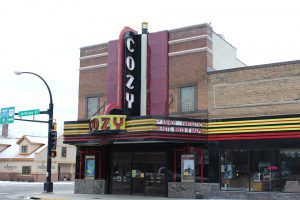
The Cozy Theater: a multi-cinema with three screens
Along with the abundance of screens that multiplexes hold, they also include more “convenient” features that many small theaters cannot afford. Some of these features include: reclining chairs, bars, and restaurants. In an interview with the owner of The Cozy Theater, Dave Quincer, he mentioned how adding features like these would be very costly. With recliners taking up much more space than regular seating, his theater would have to add more show times and have advanced ticketing because the theaters would fill up faster. As for adding a restaurant, he feels that in a small community, he would then be competing with the other local restaurants and cafes (Quincer).

Parkwood 17’s concessions and pizzeria
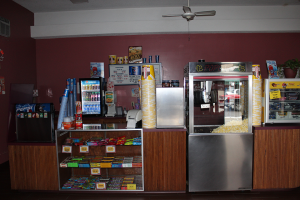
The Cozy Theater’s main concession stand
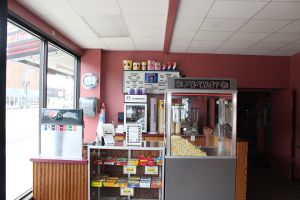
The Cozy Theater’s second concession stand

Parkwood 17’s reclining chairs
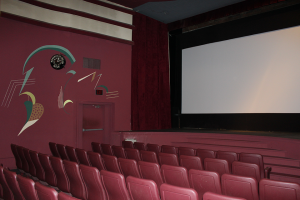
The Cozy Theater’s main theater room
Dave also stated in the interview that he believes small theaters are still desirable because of their unique atmosphere and low prices. Although they may not include the wide variety of food and drinks and luxury seating, many people come by to reminisce on their past experiences in theaters.
With the 1938 art decorations and low admission and concession prices, a large crowd is drawn into the theater every weekend. Dave said that consumers from as far as forty miles away will stop by to experience the charming environment of The Cozy Theater. In 2013, they were voted the best theater in Minnesota by WCCO, drawing in even more people from around the state (Brickman). Besides far-travelers, the community of Wadena is very involved with the theater. Although they are considered a poverty county, Dave still sees many regular customers come back, some even only for the popcorn. Because of the community engagement, Dave is able to give back whenever there are benefits and fundraisers in their town. “People have to come in and support you and you can turn around and support things in the community.” This theater is very important to their community for all aspects; and with other small theaters going out of business near Wadena, Dave mentions “you don’t realize what an asset a theater is to a community until you lose it” (Quincer).
Because of Dave’s passion for the theater industry, along with his engagement in the community, he has continued the family tradition and has ran the theater by himself for the past twenty-five years. The, single-screened, Cozy Theater had its grand opening on March, 10th1914 by the Beadreau’s; and it was then sold to Pierce M. Getter, who ran it until 1923. The theater was then sold to the Quincer family, who were a previous theater owners in North Dakota. The Quincer family has passed on the theater through three generations. While Dave’s father ran the theater, with his grandmother and uncle, they built and opened the Wadena Drive-In and the Prairie Drive-In. By 1989, they were both closed due to the low demand for drive-in theaters (The Cozy Theater).
In the meantime, they also had a few periods of closings, due to renovations on the Cozy Theater. During the summer of 1938, the theater was closed for remodeling and a two-hundred seat balcony was added along with the neon marquee outside of the theater. Along with these major additions, there was a short period of time where a video store was added to the theater, for people to rent movies. This was removed in 1996 so they could expand the concessions and add a second theater (The Cozy Theater). More recently, in 2015, Dave opened the Starlite Drive-In theater, in Litchfield Minnesota (Starlite: Drive-In Theater). This drive-in is still open today, but only during the summer, and it is a huge hit for students in high school.
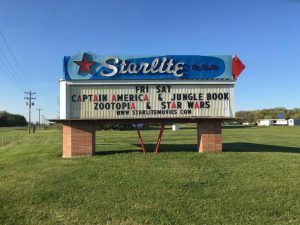
Starlite Drive-In, Litchfield MN
Along with the additions to the theater, the theater also had to upgrade their projection system during the transition from film to digital. This process was quite difficult for many small theaters, but the transition was, luckily, very simple at the theater for Dave, due to the National Theater Organization. This organization helped with funding, during the transition, for many small theaters. Although the theater’s transition was almost covered by the organization, the upgrade at the drive-in was a little more difficult. When it was bought in 2015, two of the five screens were already converted, and one of the digital projectors happened to be broken. Today, only two of the screens are used because of how expensive the transition would be for all five screens (Quincer).
Although the transition was financially less difficult for the Cozy Theater and Starlite Drive-In, other small theaters and even large theaters struggled, with some still struggling today. Large theaters are generally able to make more money than small theaters because of their revenue. Many small theaters have to keep low prices on tickets and concessions due to their location, while large theaters are able to raise prices, because they are usually located in larger cities. Although some are able to do this, “stocks fell and debt rose,” for all theaters, due to the increase of venues, in the early two thousands, each theater was making less (Bordwell 76). Many theaters went out of business, with theaters now in debt, buying new equipment was difficult for all. In 2011, “Twentieth Century Fox sent out a notorious letter declaring that by the end of 2013, at the latest, none of its titles would be circulated on film” (Bordwell 78). Theaters were then rushed to convert to digital; twelve thousand screens were converted that year, and by January of 2012, “over half of all commercial screens around the globe were digital” (Bordwell 79). “After a few bumpy years, digital projection was king of the world” (Bordwell 82).
With digital projection taking over theaters, and only around six percent still using film, theaters continue to advance with technology (Higgins). Like with film reels, some theaters still rely on movies being delivered on a hard-drive. Today, many theaters, including the Cozy Theater, are able to receive films wirelessly, making the process of receiving and screening films much quicker. Although the process is faster, after the film is chosen, the process of finding and confirming the availability of the film is much more difficult. This step of the process deals with the production studios and most theaters hire a booker to negotiate. A bookers main responsibility is to negotiate an exhibition contract and the commitment of the film (Roos). This includes how much the studio will get back from ticket sales and how long the theater must screen a film. The amount the studio gets back is based on a percentage, sometimes as high as ninety percent of the theaters profit, and how well it does in the box office. If a theater doesn’t make enough money to cover the costs of buying the film, which is rare, they are not required to pay anything back, because they didn’t make any money themselves by screening that particular film.
For the Cozy Theater, deciding which films to screen is relatively easy. Dave has been working in the theater business for many years and has gotten to know the people of Wadena while doing so. With the knowledge of what the community likes, Dave can be considered a film curator primarily for the reason that he is able to screen older films and is still able to draw in a crowd. “You need to know the films and your audience” (Bosma 51). From his years of experience, he has noticed that family movies and animated Disney movies do very well. “There isn’t a theater anywhere that isn’t going to tell you that those movies won’t do well” (Quincer). Although choosing a movie is easy, some studios are not as willing to give to small theaters. This is when the booker comes into play. Dave’s previous booker started booking for the drive-ins and The Cozy in 1977. His son, Mike, later took over; Dave has been working with this family throughout the entirety of owning the theaters. Mike also works with a few bigger theaters as well; so Dave believes that this gives him an advantage when dealing with the studios. The highest he has ever had to pay back to the studios is seventy percent. Dave also believes that his theaters do well enough that they are able to get the studios attention and then they are more willing to negotiate. “Small town theaters don’t have a lot of clout with the studios because our gross isn’t there for them to be too concerned about” (Quincer).
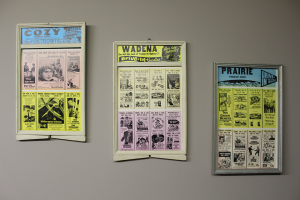
Advertisement posters from each theater
Because of the rates that theaters have to pay back to the studios, many theaters struggle to come up with money elsewhere. This is where concessions come into play; without it, many theaters wouldn’t have anything else to make money from. This is the reason for some theaters high pricing and no outside food policies. Although theaters usually do well with enforcing these rules, drive-ins struggle with this. At the Starlite Drive-In, there is no policy against bringing outside food, so the concessions stand suffers more there than it does at The Cozy. Aside from concessions, many small theaters also do paid advertisements before the screening of the movie. In Dave’s case, his advertisements are put together on a film reel. He cuts and splices each advertisement to be played through the old projector. With his work to include other businesses and the community in his theater, Dave finds his theater very important. Theaters are a space for gathering and it gives small town residents another option for activities outside of the house. On the business side, “theaters are an important economic driver” for the community; bringing in consumers that will also visit other businesses in the area (Quincer). Overall, small theaters are a huge asset to a community for their inclusion and involvement with the community.

Advertisement film reel set up, at The Cozy
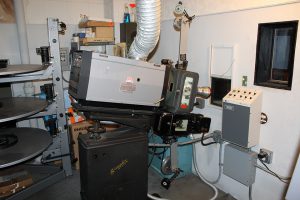
Film projector at The Cozy
From small theaters to drive-ins and cinemas to multiplexes, all theaters are important to their communities, not only economically, but they provide an environment that an at-home-theater will never be able to provide. Running a theater is not easy, it takes time, which can affect family life and it can be costly, due to the number of updates they need to tend to, in order to keep up with recent film standards. While the impact of small theaters affects the community, non-locals and other businesses are affected too. They provide history to the town they are located in, making it a place to reminisce. They face their own difficulties as they advance their technology and upgrade the venues. They interact with the community by selecting appropriate films that are appealing to members of the community. And lastly, theater owners make this business their number one priority. Because theaters are such an important asset, “a town [wouldn’t be] a town unless if it had a theater” (Quincer).
Works Cited
Bordwell, David. Pandora’s Digital Box: Films, Files, and the Future of Movies. Madison, Wisconsin: The Irvington Way Institute Press, 2012. Print.
Bosma, Peter. Film Programming: Curating for Cinemas, Festivals, Archives. Columbia University Press, 2015. Print.
Brickman, Matt. “WCCO Viewers’ Choice For MN’s Best Movie Theater.” November 28 2013. Web. <https://minnesota.cbslocal.com/2013/11/28/wcco-viewers-choice-for-mns-best-movie-theater/>.
“The Cozy Theater.” 2017. Web. <http://www.cozytheatre.com/about.html>.
Higgins, Chris. “The Last Reel: A 35mm Movie Theater Goes Digital.” April 18 2015. Web. <http://mentalfloss.com/article/63216/last-reel-35mm-movie-theater-goes-digital>.
Park, Young-Seo, and Sungil Ham. “Spatial Analysis of various Multiplex Cinema Types” 5.1 (2016): 63-73. Print.
Roos, Dave. “How Booking Agents Work.” November 4 2008. Web. <https://entertainment.howstuffworks.com/booking-agent2.htm>.
“StarLite: Drive-In Theater.” Web. <http://www.starlitemovies.com>.
Quincer, Dave. Personal Interview. 21 November 2018.

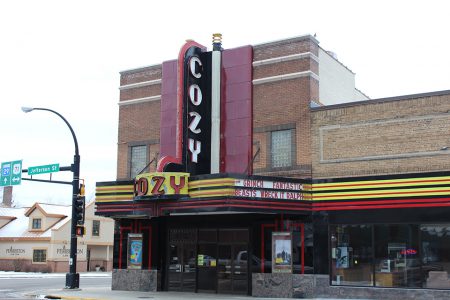
Trackbacks/Pingbacks